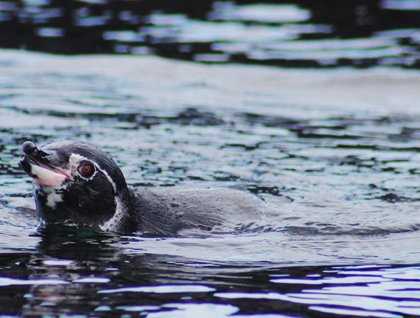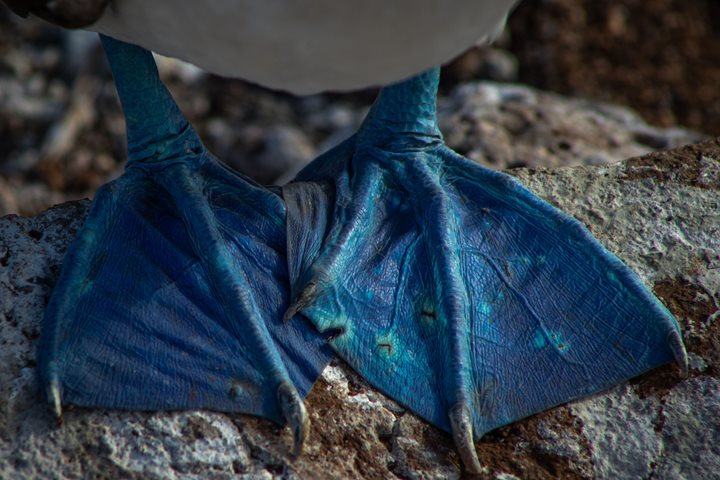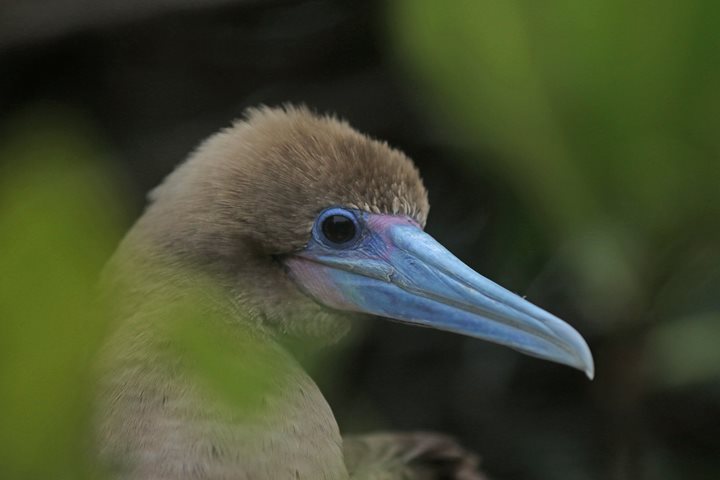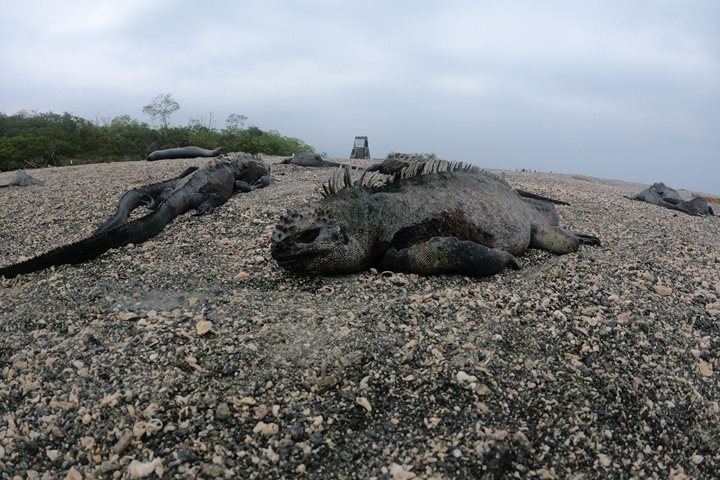When it comes to enjoying a passion for biology and geology, Chinese Hat in the Galapagos Islands is the right place! With its conical shape and eroded remains of a tuff cone, this island shows the volcanism of the archipelago like a snapshot taken during prehistoric times. A few meters from Chinese Hat and separated by turquoise waters the neighboring island known as Santiago sits barren and covered by a black lava flow created by an eruption in the 1800’s. To explore a pristine area where life on land struggles to establish itself but in the ocean life is plentiful, we decided to get ready, deploy our Zodiacs, and begin the adventure!
Our day began with a Zodiac ride observing the immense black lava field, which produced a barren landscape that contrasted with the greenery and lush vegetation observed few day ago in the highlands of Santa Cruz. We were able to spot a few lava herons, Galapagos hawks, brown pelicans, and Galapagos penguins swimming like torpedoes trying to catch small bait fish. We returned to the coast of Santiago to enjoy a terrific snorkeling with all sorts of marine life, from penguins swimming with us, a great number of tropical fish, white-tipped reef sharks, and iguanas feeding on algae underwater. We were fortunate because the ocean showed us its wonders.
After lunch and a short navigation along Santiago Island and Bainbridge Islets where we spotted some greater flamingos, we disembarked A shore landing where your feet will stay dryat Sullivan Bay to explore and imagine how Galapagos was from its beginning, understanding the establishment of successful species in the enchanted archipelago. We observed dramatic formations of Pahoe-hoe, or ropy lava, a great number of small cinder cones and incredibly, along this dry and barren terrain, life has begun to well up. We observed lava cactus and pioneers plants growing on the naked rocks. Finally we arrived at the old lava field, its brown and reddish colors contrasting with the new black lava. The huge eroded cinder cones formed natural paths among them, observing a surrealistic landscape comparable and incredibly similar to Mars, the red planet.
We traveled millions of years back in time, to explore the Galapagos Islands through the process of primary succession. These struggling pioneer species started a new ecosystem, fighting seasons and competitors to finally be part of the natural laboratory of evolution. This is a remarkable place on planet earth known as “The Galapagos archipelago.”







